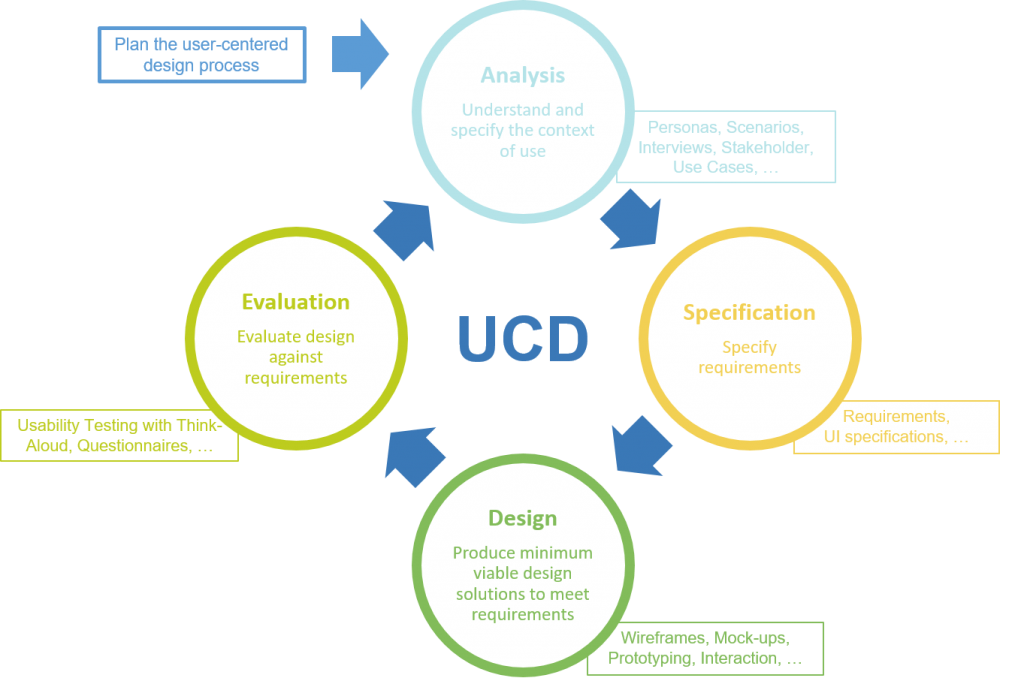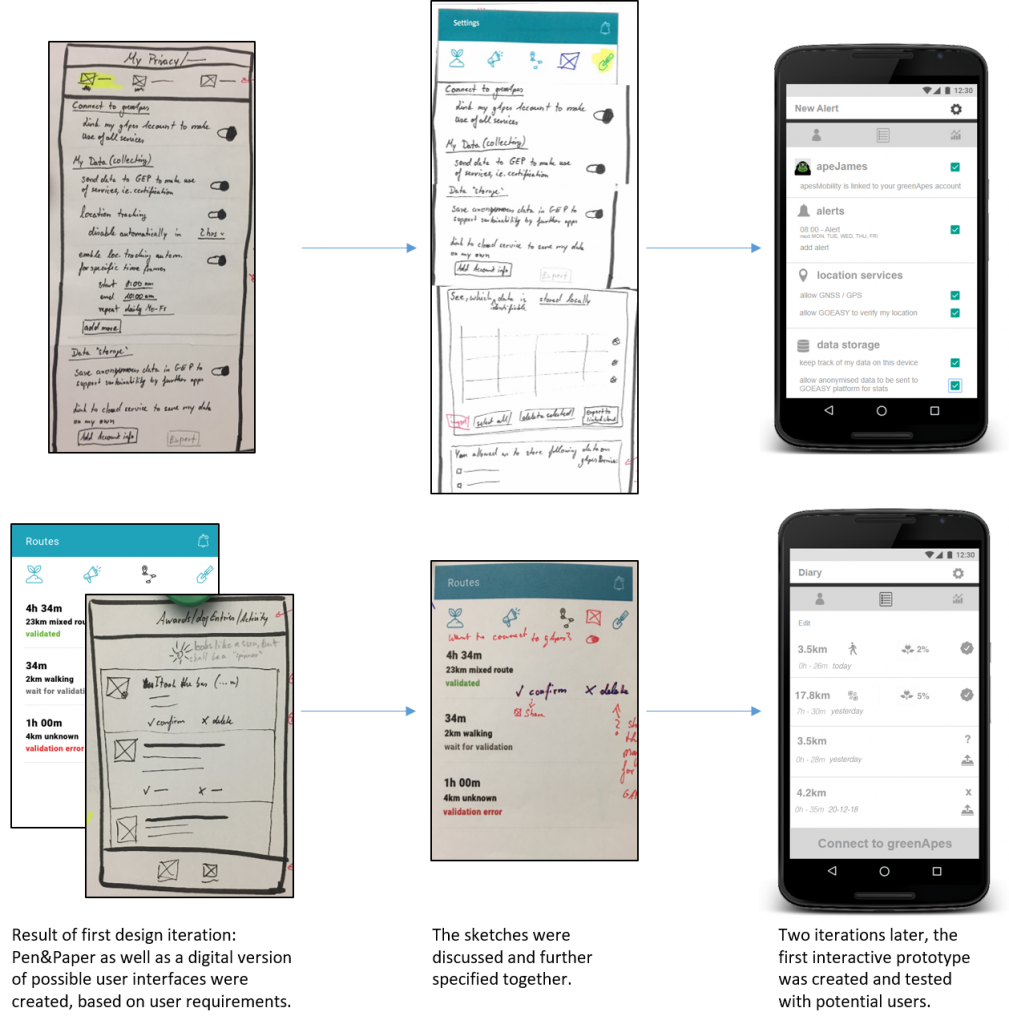The GOEASY platform is reaching the alpha-version evaluation phase. For the pilot ApesMobility, held in Torino, greenApes will release a new application called GoPongo. This article describes the way how greenApes and Fraunhofer FIT are collaborating in order to develop the application for the end users. If you live in Torino and want to join before the app is available in the app store – get in touch with us.
In GOEASY we apply user-centered design (UCD) from day one of the project. The UCD process, as depicted in Figure 1, is a framework that offers multiple methods that are built on close interaction and discussion with users. This ensures collecting the best information and feedback possible, from a human perspective. Hereby, the application of specific methods depends on the level of already gathered knowledge as well as on available resources. Furthermore, it is a framework that is not limited by specific interfaces or technologies, which enables flexible adaptation to different end users’ needs and demands.
The UCD process is applied iteratively. This allows to adapt to changing user needs and requirements as well as to limitations and problems that may occur during the project development at any stage. Iterations can happen between any phases in the process, but are usually triggered after evaluation.

Figure 1: The UCD process adapted from the ISO 9241-210 [1]. © Fraunhofer FIT
Figure 1 shows the four steps of UCD as applied in GOEASY.
At the beginning of the project we identified potential user groups who have an interest in GoPongo. In a nutshell, the main user will be a citizen, who is motivated to live more sustainable. S/he might be an active user of the digital platform greenApes as well. To understand and specify the context of use of GoPongo, a focus group was organized with active users of greenApes. Possible scenarios were discussed that could be realized by using GoPongo. With all the information gathered, the specification of required functionalities started and how they can be presented in the user interfaces of the app. Also during that phase, greenApes and Fraunhofer FIT worked closely together. Although located in two different countries, the teams shared their ideas and visualizations regularly. In that way, the idea of GoPongo grew from a simple drawing up to a mobile application with graphical elements. This progress is exemplary shown with two screens in Figure 2.

Finally, the static sketches became an interactive prototype. In January 2019, greenApes and Fraunhofer FIT organized again an event with potential users in Florence. This time, the participants were asked to test the prototype. The participant’s general feedback was positive. We were able to collect important feedback on specific features (e.g. setting an alert) and design decision. Currently, we are implementing that feedback in order to release the alpha-version of GoPongo for further test purposes in late summer this year. Figure 3 shows the current state of the application that finally got its visual design.


